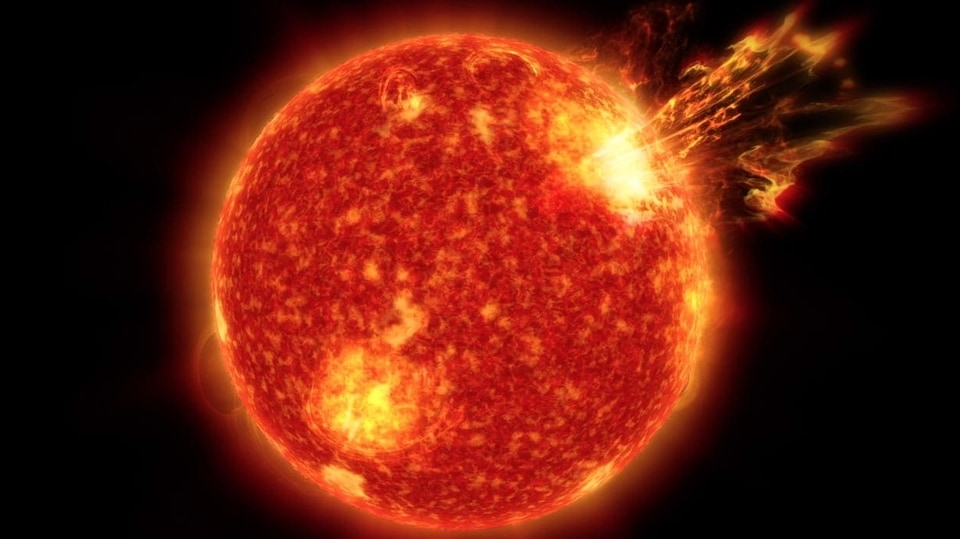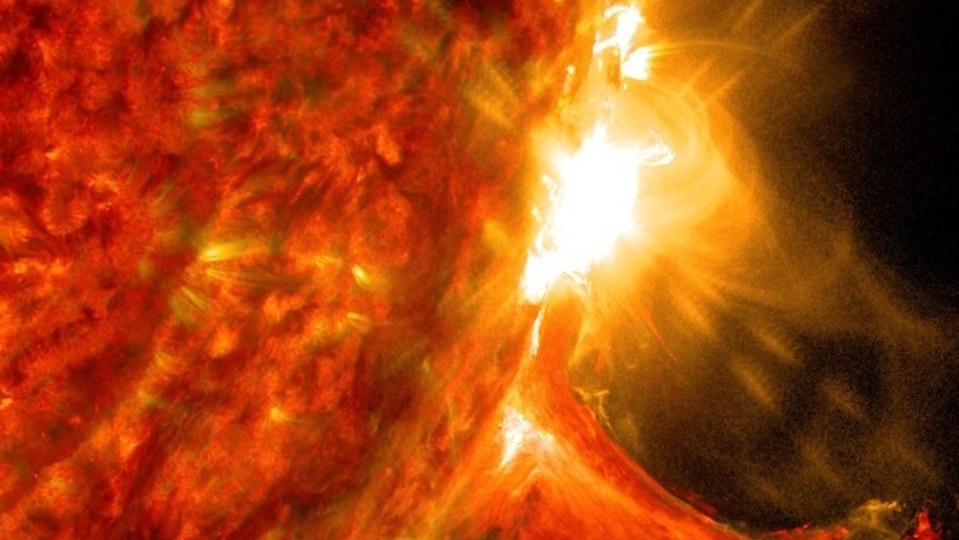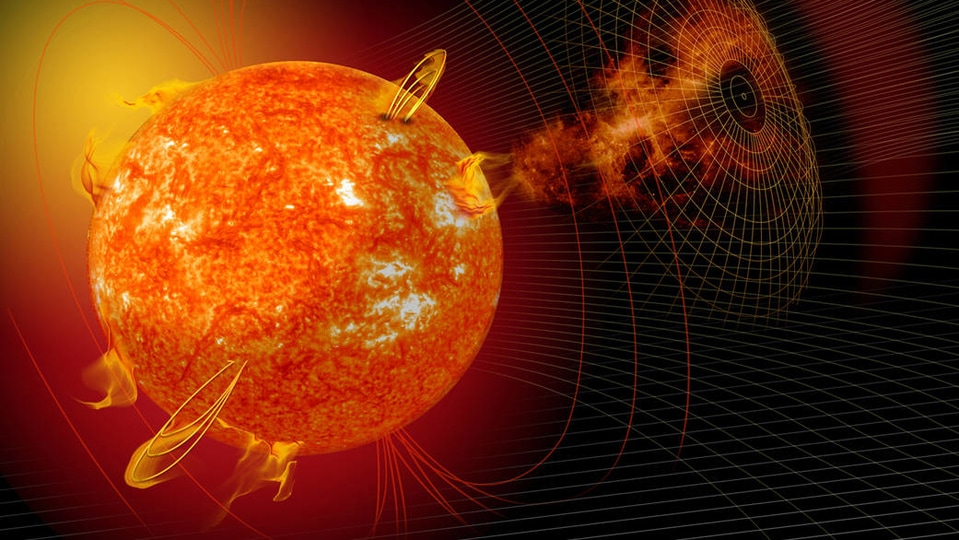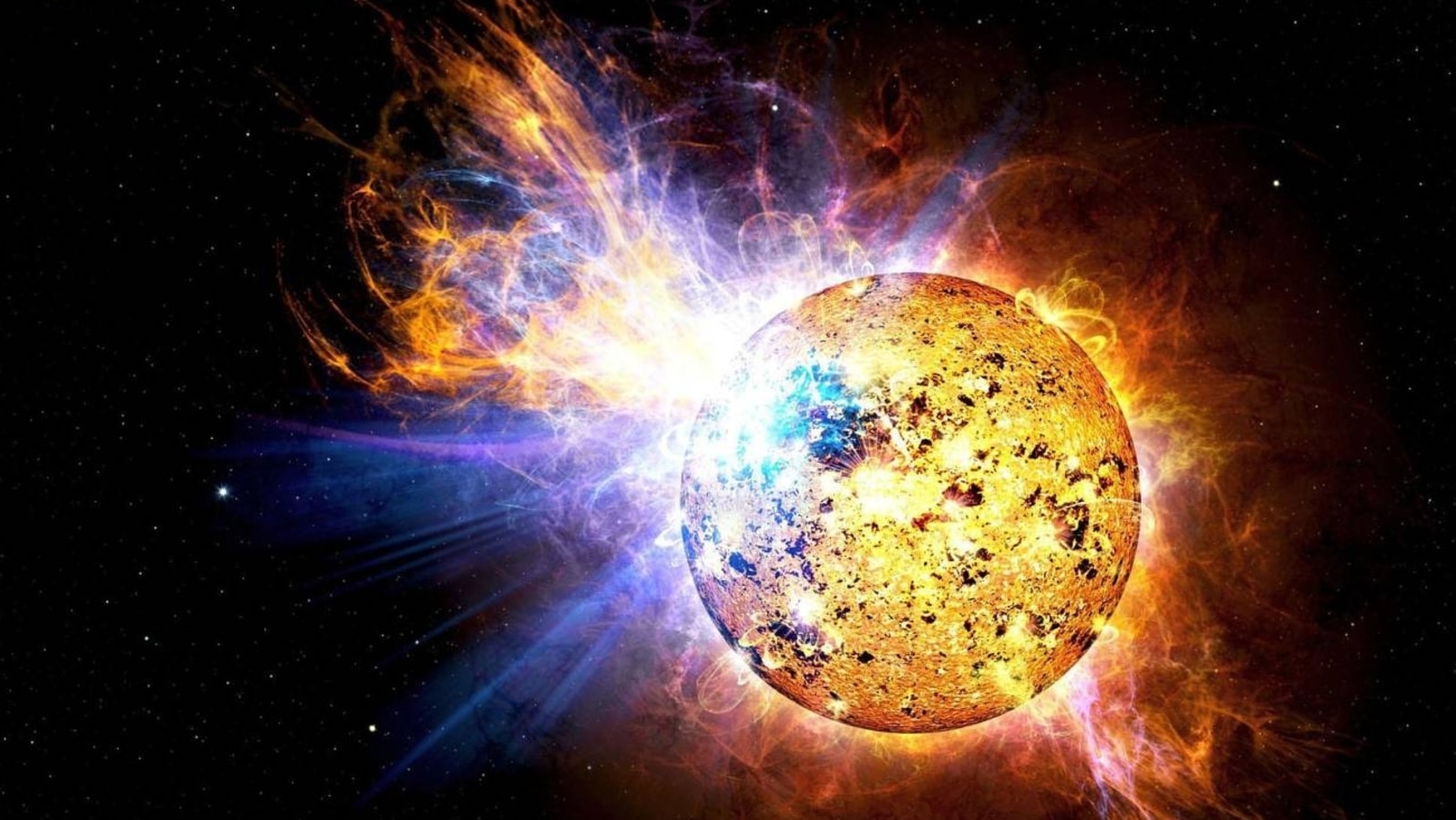GIANT sunspot that recently exploded is now facing Earth; Solar storm trouble coming?
A massive sunspot on the Sun that last week caused a huge farside explosion, is now facing the Earth. Astronomers fear that if another explosion took place, the Earth could suffer a dangerous solar storm.




_1639373804152_1639373815879.jpg)

 View all Images
View all ImagesIn the early hours of February 4, the NASA Solar Dynamics Observatory (SDO) detected a massive explosion on the far side of the Sun. It was reported that the explosion was in fact a solar flare eruption that took place inside of a huge sunspot. Back then, it was considered a lucky escape because if that explosion was directed towards the Earth, it could have resulted in a powerful solar storm event. However, now the same sunspot is facing the Earth and some astronomers fear that another explosion on the sunspot is possible, which can directly hit our planet.
The development was reported by SpaceWeather.com which mentioned on its website, “A new and potentially large sunspot is emerging over the sun's northeastern limb, right here. This is probably the same sunspot that hurled a giant plume of hot plasma into space from the farside of the Sun on Saturday”. The report also mentioned that the chances of a geoeffective flare eruption in the coming days has also boosted with the presence of this sunspot.
Giant sunspot creates solar storm fears
It is not that all sunspot explosions are dangerous. Usually, it depends on the size of the sunspot and the amount of magnetic charge contained within itself. In this case, however, this particular eruption released a lot of coronal mass ejection particles. It is a sign that the eruption was so large, the mass on the surface of the Sun was sprayed in space. If this explosion took place when the sunspot faced the Earth, there was a possibility that it could have led to a G5-class solar storm.
A solar storm that strong can damage satellites, impact mobile networks and internet connectivity as well as cause power grid failure. Although, healthwise, humans will not be directly impacted by the radiation, the disruptions to emergency services and power outages at places of high importance like hospitals, can still cause a high number of deaths. The last time we suffered such a solar storm was in 1859 in an event which is now known as the Carrington event.
NASA Solar Dynamic Observatory's role in predicting solar storms
The NASA Solar Dynamics Observatory (SDO) uses a range of instruments to observe solar storms and other activity on the sun. These instruments include the Atmospheric Imaging Assembly (AIA), which captures images of the sun in different wavelengths of light to study its atmosphere; the Helioseismic and Magnetic Imager (HMI), which measures the sun's magnetic field and oscillations to study its interior; and the Extreme Ultraviolet Variability Experiment (EVE), which measures the sun's ultraviolet radiation output. Together, these instruments provide a comprehensive view of solar activity and allow scientists to better understand and predict solar storms.
Catch all the Latest Tech News, Mobile News, Laptop News, Gaming news, Wearables News , How To News, also keep up with us on Whatsapp channel,Twitter, Facebook, Google News, and Instagram. For our latest videos, subscribe to our YouTube channel.




























